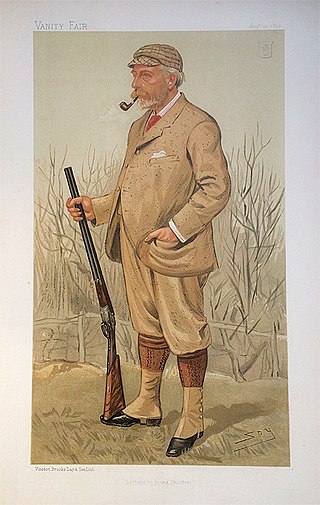Loading AI tools
From Wikipedia, the free encyclopedia
Sir Ralph William Frankland Payne-Gallwey, 3rd Baronet (1848–1916) was an English engineer, historian, ballistics expert, and artist.

The son of Sir William Payne-Gallwey, 2nd Baronet, and his wife Emily Anne, a daughter of Sir Robert Frankland-Russell, 7th Baronet, the young Payne-Gallwey was educated at Eton College. In 1881, he inherited from his father the Thirkleby Hall estate in the North Riding of Yorkshire.[1]
He married Edith Alice Usborne. Their son William Payne-Gallwey was a soldier and first-class cricketer who was killed in action during the First World War.[2] As a result of that, Payne-Gallwey decided to sell his Yorkshire estate.[1]
Payne-Gallwey began by writing books on sport. Early works included The Book of Duck Decoys (1886) and Letters to Young Shooters (1892). His The Crossbow appeared in 1903,[3] and his High Pheasants in Theory and Practice in 1913. In later life, he also turned to history and current affairs, with The Mystery of Maria Stella, Lady Newborough (1907), A History of the George Worn on the Scaffold by Charles I (1908) and The War, A Criticism (June, 1915). This was an appeal for conscription to be brought in, to greatly increase the size of the British Army.[4] The also compiled an unpublished manuscript on archery, including tables of flight distances, illustrations and photographs of bows, and information on Turkish and Chinese archery.[5]
Seamless Wikipedia browsing. On steroids.
Every time you click a link to Wikipedia, Wiktionary or Wikiquote in your browser's search results, it will show the modern Wikiwand interface.
Wikiwand extension is a five stars, simple, with minimum permission required to keep your browsing private, safe and transparent.